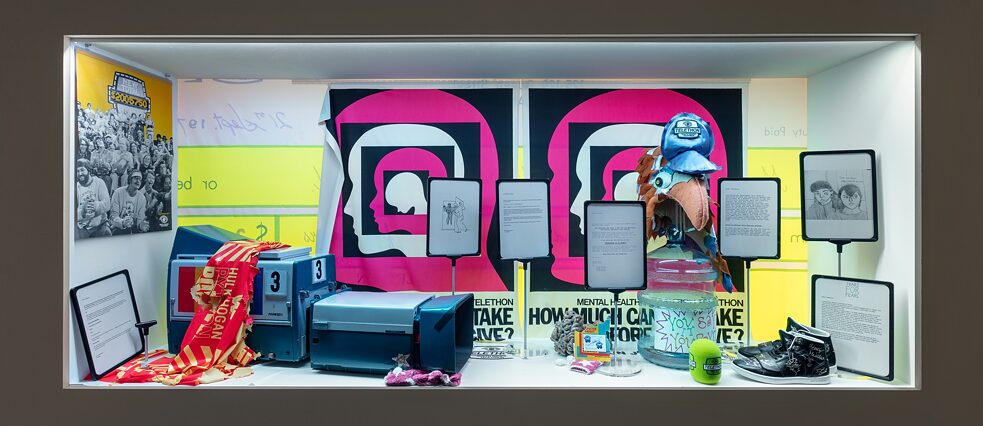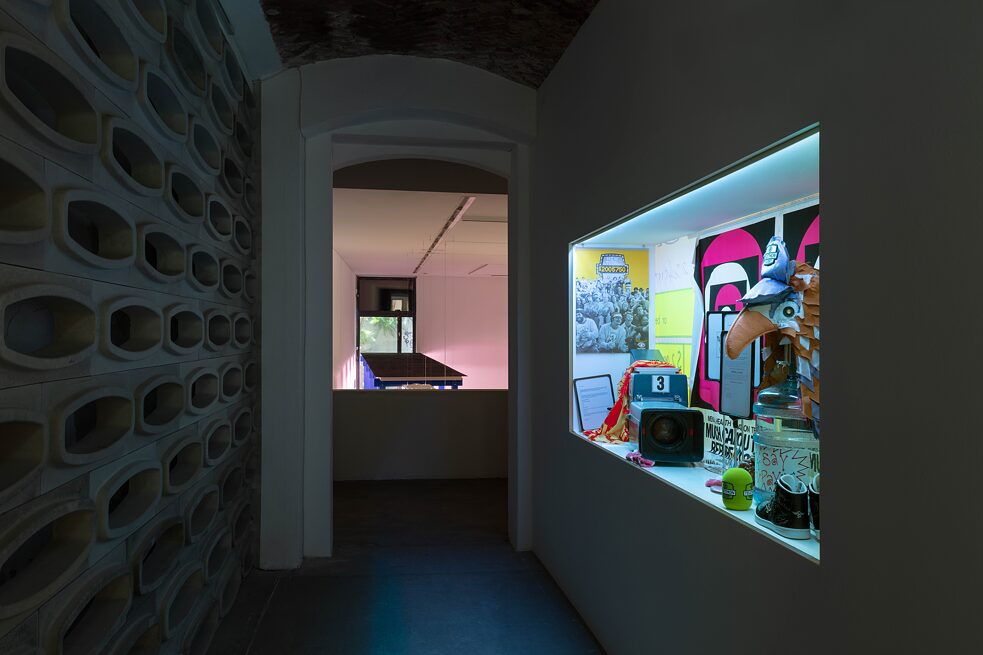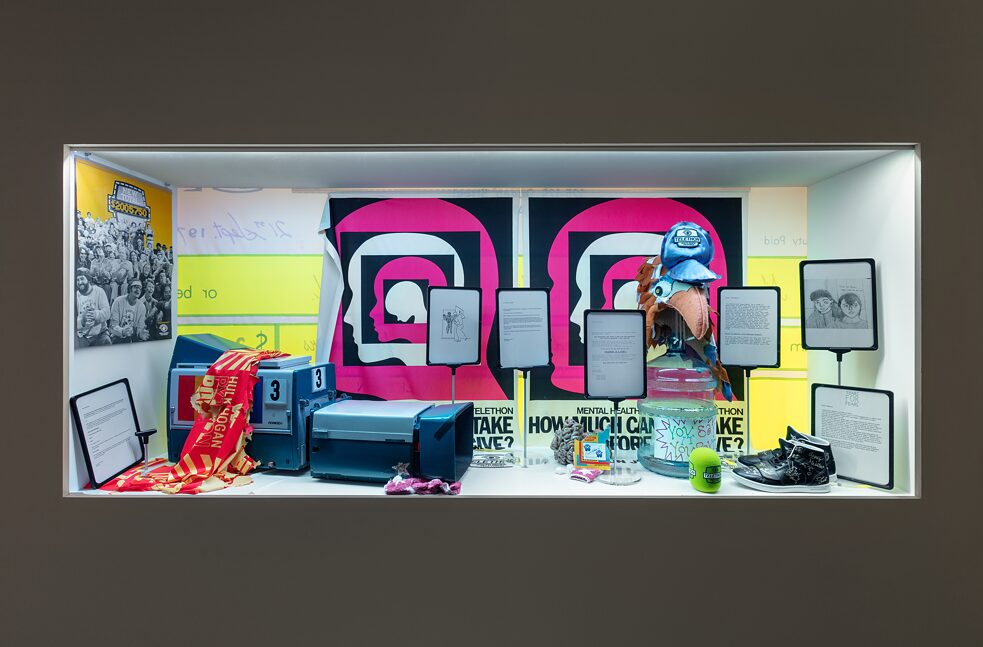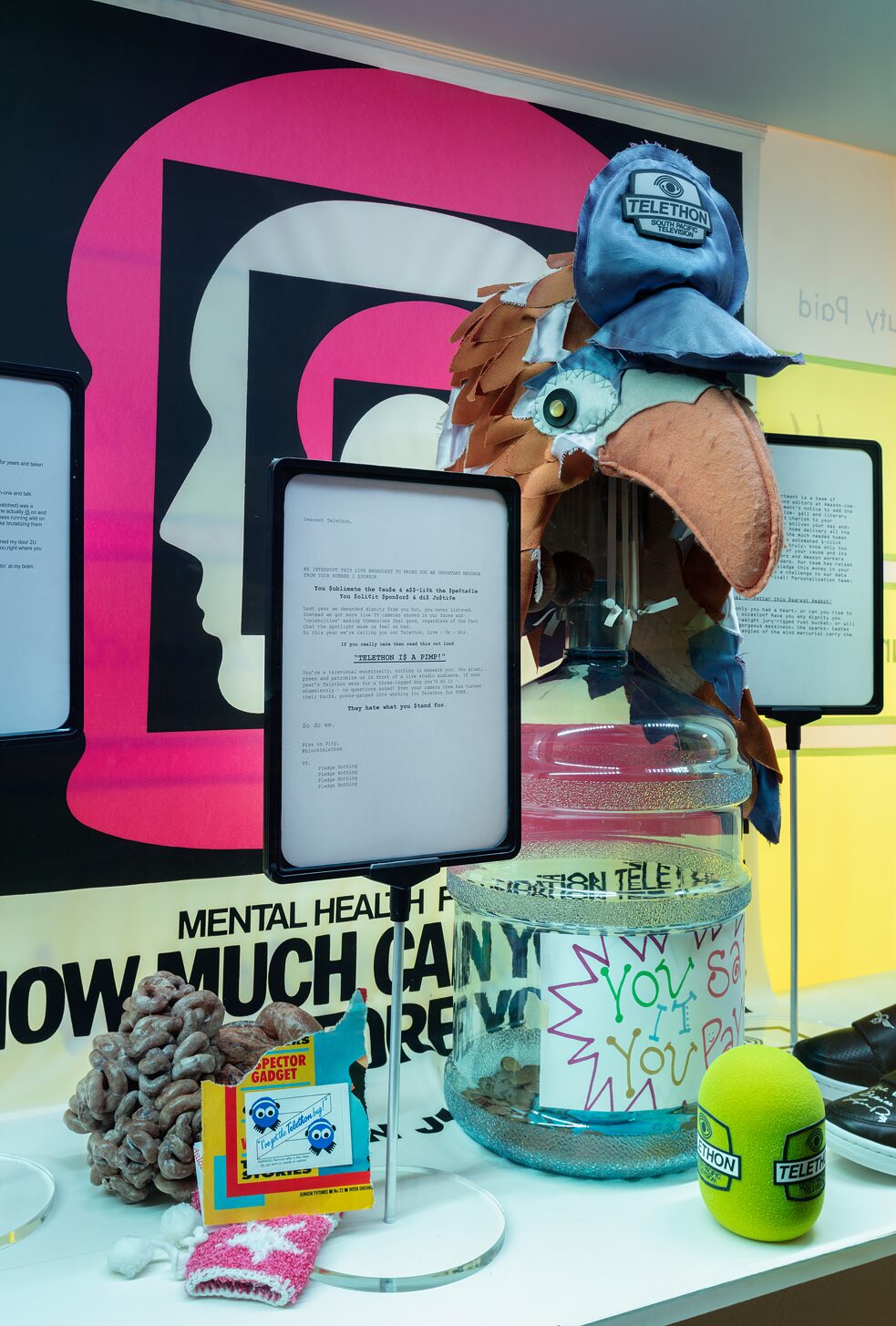Michael Stevenson

The Goethe-Institut New Zealand and Contemporary HUM present a series of portraits about New Zealand artists who have found a new home - also artistically - in Germany. Curator Anna Gritz curated Michael Stevenson's show Disproof does equal Disbelief at KW Institute for Contemporary Art in Berlin in 2021.
By Anna Gritz
A peeping noise can be heard, breaking the quiet of the exhibition space, and recurring at regular 90-second intervals – both a disturbance and a regular inhabitant of the space. How long has it been there? The sound is rather like the squeaking of sneakers on rubber floors, high-pitched and sharp enough to suspend our attention, but also so short that we then forget about it until it resurfaces. It is somehow familiar, but not immediately recognizable, and only its repeating pattern finally enables us to place it as the warning signal of a smoke detector that is running out of battery charge – an alarm that is not warning of a calamity in the process of unfolding, but rather of its no longer being able to warn in the event of a fire, because its energy supply is running out.
Michael Stevenson came across a mention of this noise in reports about the 2008 financial crisis. Back then, entire neighbourhoods, newly built on the outskirts of sprawling towns but never occupied, lay abandoned and uninhabited except for a choir of alarms from battery-depleted smoke detectors echoing along the vacant streets. As one crisis was transpiring, the detectors were warning of their inability to detect another. This sense of impending doom intertwined with a temporal conundrum is a distinctive element in the art of Michael Stevenson, who has developed an artistic language that embraces the coexistence of alternate temporal, causal and navigational underpinnings. Through in-depth research and close observation of the executive and ideological edifices of humanity, Stevenson latches on to specific anecdotes and micronarratives that comment on the articulations between overarching disciplines such as economics, technology, education and religious faith, and the mass-produced infrastructures that amplify their reach.
Born in 1964 in Inglewood, New Zealand, Stevenson studied at the Elam School of Fine Arts, Auckland until 1986 and has lived in Berlin since 2000. He has exhibited widely, and represented New Zealand at the 50th Venice Biennale. Since 2011 he has served as Professor at the Academy of Fine Arts in Nuremberg. In the almost three years of preperations towards his solo exhibition that I curated at KW Institute for Contemporary Art in 2021, our shared interest in architecture granted me a unique insight into a side branch of his practice, feeding both his artistic process and his association to his home town Berlin. Frequently, we shared images of our architectural explorations mostly in the search of postmodernist gems, hidden in the Berlin city fabric. From the ‘Mäusebunker’ to John Hejdukts masterpieces, the pop architecture of Ludwig Leo, and more randomn venercular constructions in unison they assembled a shared backdrop, which regularly fed our conversations about the exhibition and our life in Berlin alike.
While Stevenson started off working in painting, drawing and photography, he has since developed a multifaceted practice and produces complex, extensively researched large-scale sculptural installations, as well as working in other media including film, sculpture, printmaking and book publishing. His most recent works focus on questions of belief and investment in early mass media, zeroing in on the phenomenon of live charity telethons like those frequently organized in New Zealand during the years of his upbringing there. The most memorable of these events was the 1977 telethon, to raise funds for the Mental Health Foundation of New Zealand, which was broadcast by the South Pacific Television network. In this case, the logic of the telethon, as an interminable exercise in media frenzy fuelled by the ostensible authenticity of physical and mental exhaustion – 5 o’clock shadows, rolled up shirtsleeves and undone shirt buttons among both moderators and participants, matched by exhaustion of the attention span and wallets of the viewers, as they sprawl on their couches for hours on end, writing endless cheques, wrapped in blankets sustained by snackplatters only – became a cautionary mirror of the very public health crisis that it sought to remedy.
As well as responding to a decisive event in the advance of mass media in New Zealand, Cheap Heat presents a key to the way in which we engage with media today. By drawing back the curtain on this event in television history, we learn about our own fraught relationship with mass media, as the source of much of our exhaustion, suspension of disbelief, and our inability to distinguish between on- and off-screen reality. The title Cheap Heat stems from another televised mass media event that was on the rise in the days of telethons, the world of WWF pro wrestling. It refers to the moment in the scripted and meticulously choreographed fight when one fighter is intensifying his attack, unleashing a ”cheap” (i.e. simulated) assault on his opponent. Even though this supposed secret is widely known both within and beyond the wrestling community, awareness of this deception does not seem to diminish the appeal of these programmes. The technical term for this suspension of disbelief, which has made its way from wrestling and telethons to reality TV, advertising, Instagram filters and even politics, is Kayfabe – a pretend reality which seems to prove that no matter how openly fake the information is, as long as it generates enough public buy-in, it still has its effect on the audience.
In Stevenson’s works we are generally faced with a double or duplicate, often in the form of an architectural space tied to its “other” in a complex and non-linear manner. This clearly applies here, with the prop-room display window simultaneously presenting the aftermath and a rehearsal of the telethon logic – both sides of the work appear to feed each other. This anachronistic relationship to linear time speaks to Stevenson’s interest in conflicting knowledge structures, origin myths, and world views, allowing them to exist side by side to exemplify through their physical proximity their common ground.





